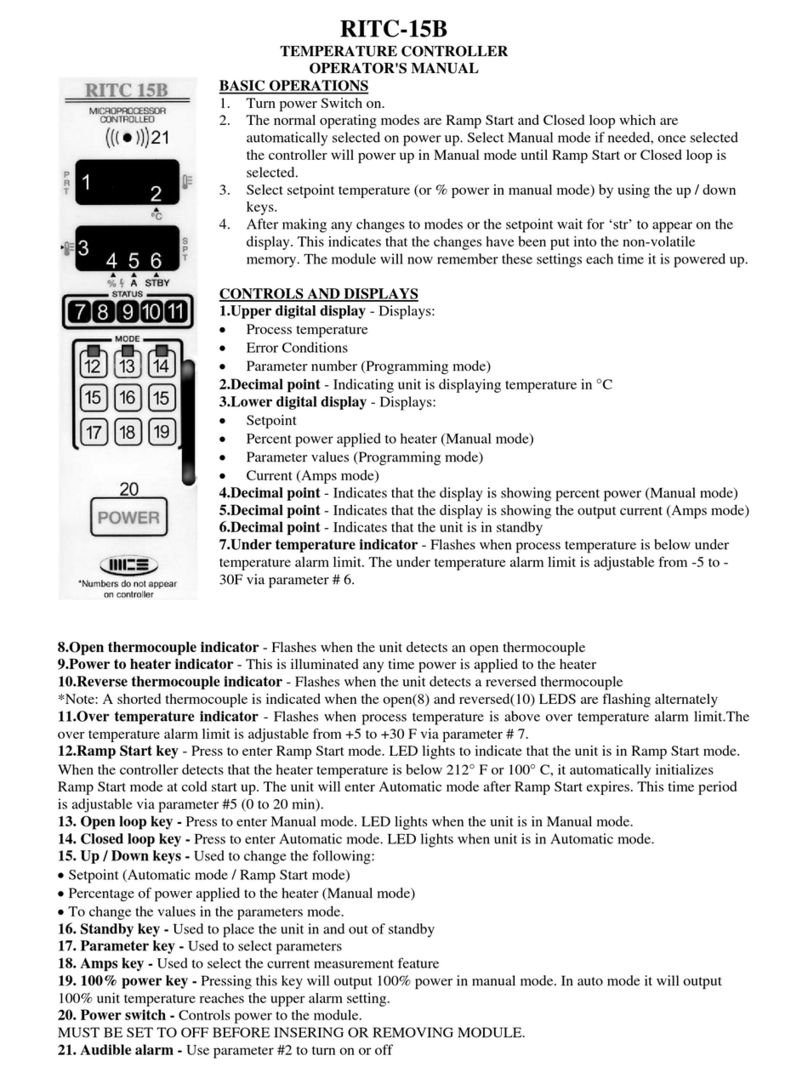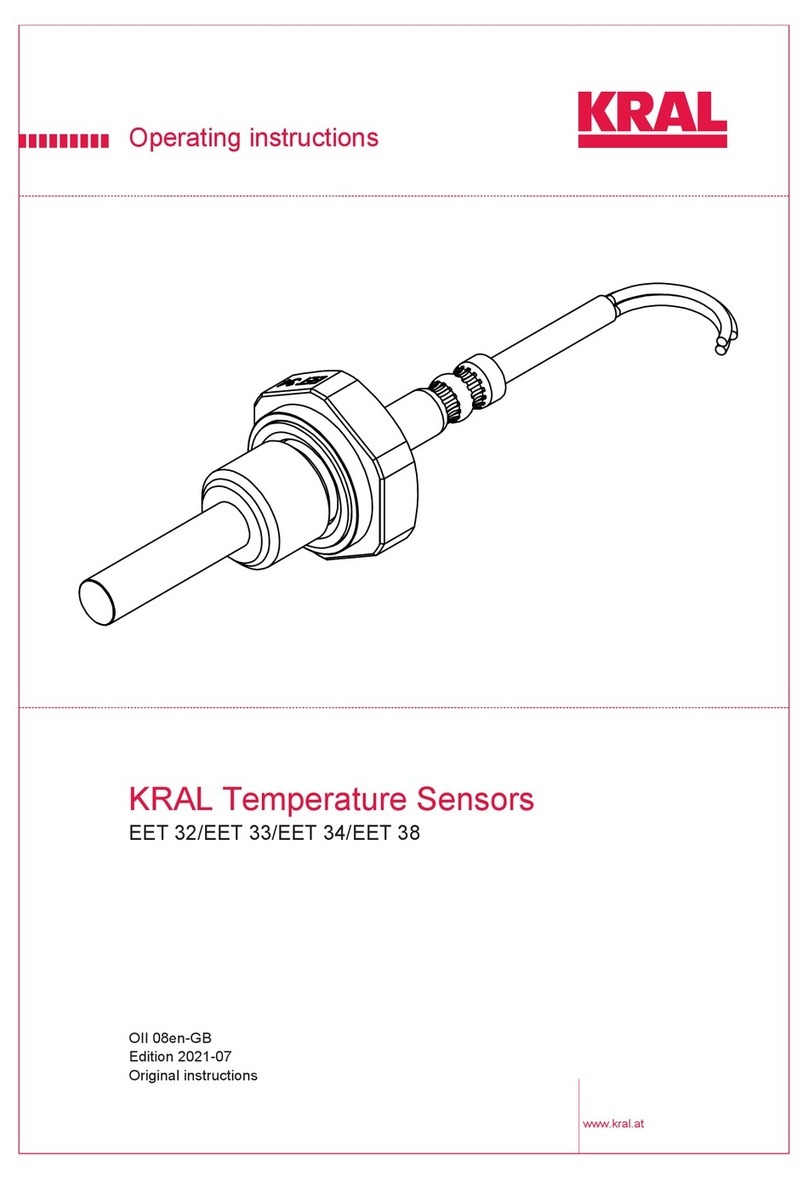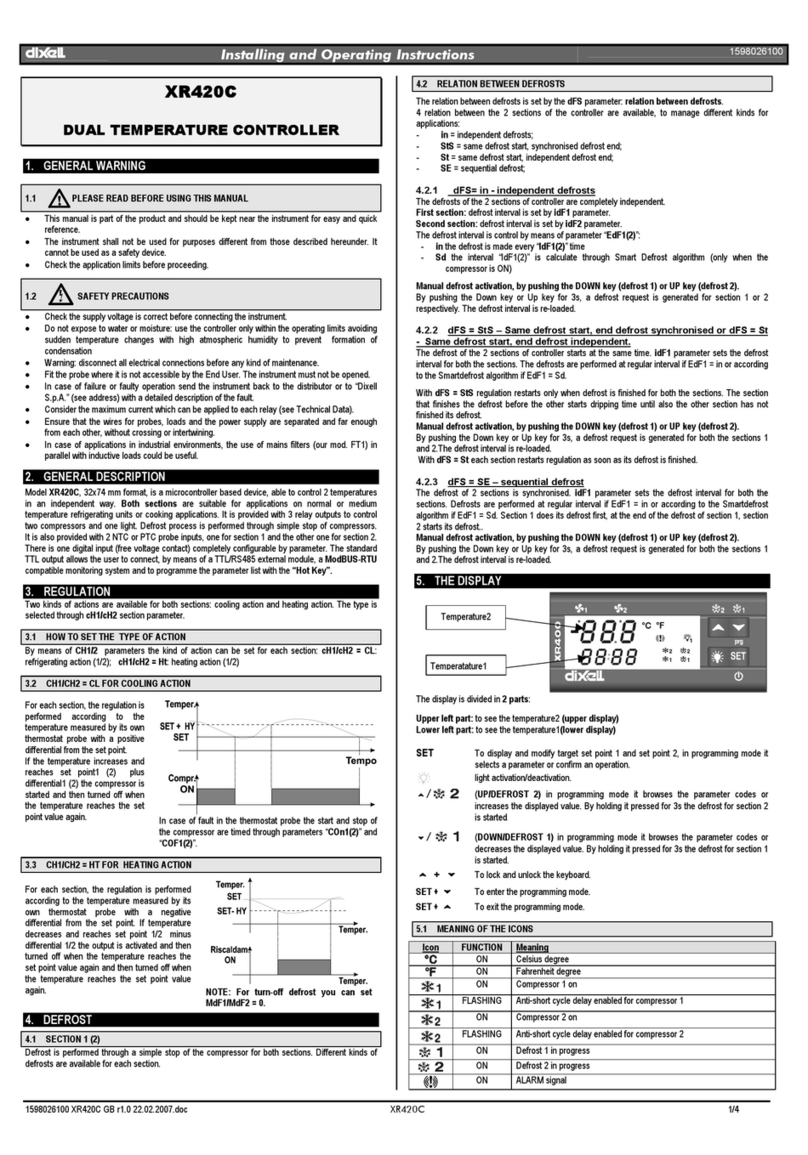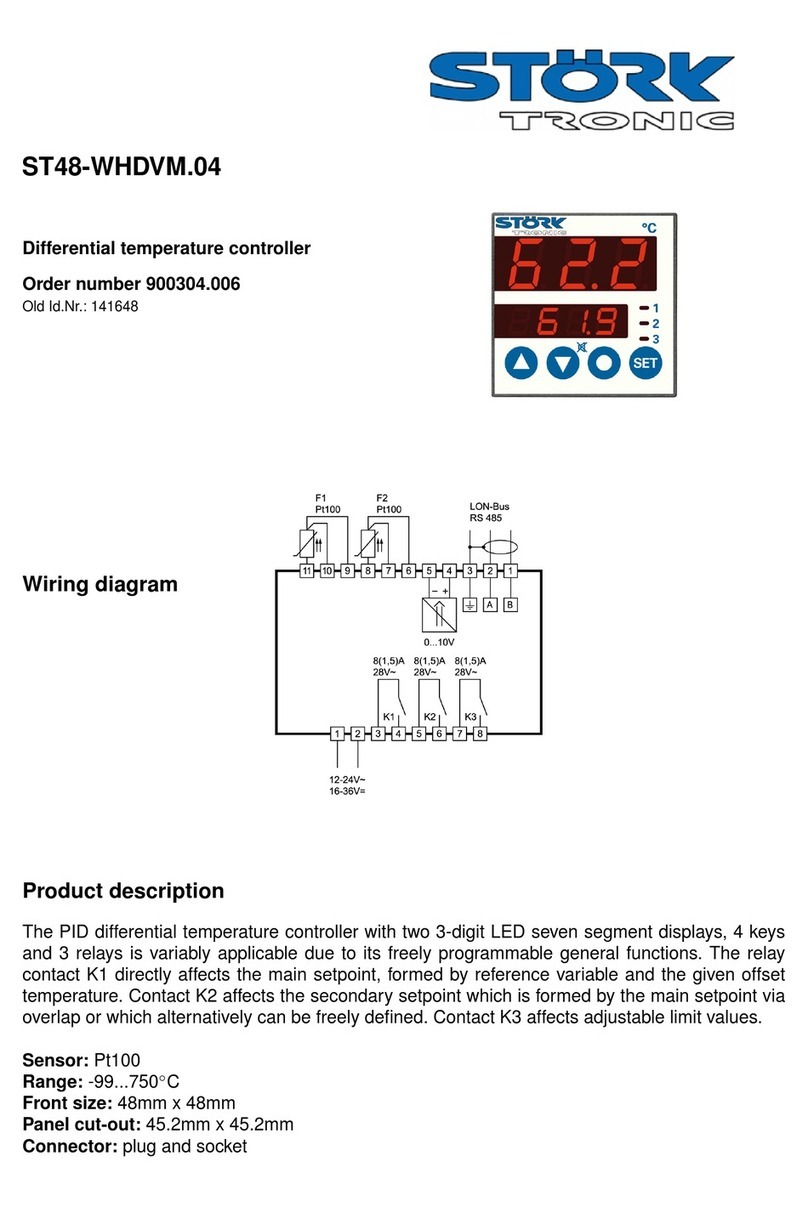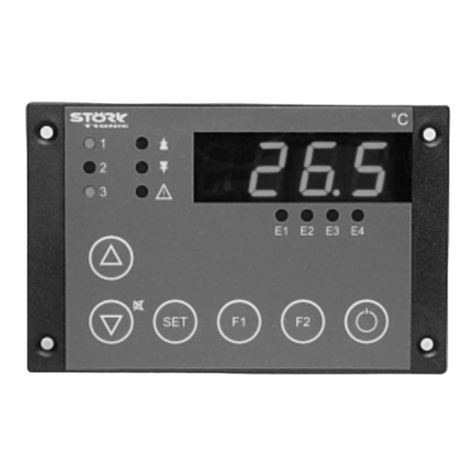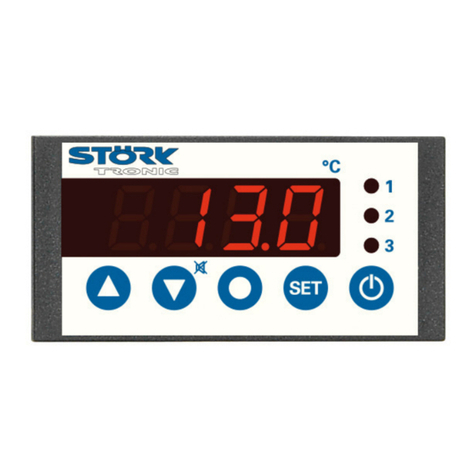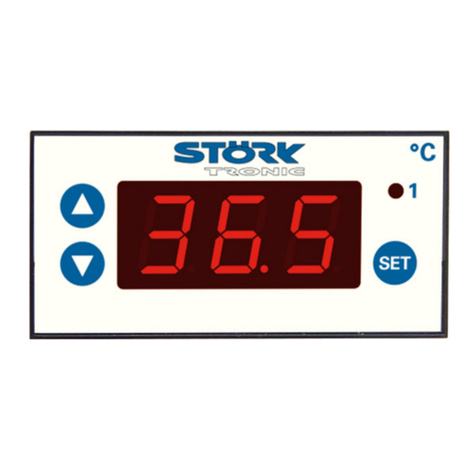
Parameter description:
The following values can change the equipment characteristics
and are therefore to be set with utmost care.
A1: Switch mode contact K1
The switch mode for the relay, i.e. cooling or heating function, can be programmed independently
at works. Heating function means that the contact opens as soon as the setpoint is reached, thus
power interruption. At cooling function the contact closes, if the actual value is above the required
setpoint. (see fig. 1 + 2)
A3: Function of contact K1 at sensor error
At sensor error the relay falls back into the condition pre-set here. If there is a data-loss in
parameter memory (display indicates “EP”) both contacts K1 and K2 are switched off.
A8: Display mode
The value can be indicated in integrals or with decimals in 0.5°K or 0.1°K. At indication in 0.5°K the
value is rounded up or down. In general, all parameter indications are presented in 0.1°K.
A19: Parameter lock
This parameter enables locking of each parameter level. If third level is locked, only parameter A19
may be changed.
A30: Function alarm exit
The alarm exit evaluates an upper and a lower limit value (see parameters P30 and P31), whereas
a selection is possible as to whether the alarm is active if the temperature lies within these two
limits, or whether the alarm is released if the temperature lies beyond them. In the case of sensor
error, the alarm is activated independently of this adjustment (see fig. 3 – 4 at parameters P30/31).
A31: Special function at boundary or range alarm
Here can be selected whether, in the case of an alarm, the indication to flash and/or the buzzer is
to start. Sensor alarm (display F1L or F1H) is indicated independently thereof by flashing display
and the buzzer.
A32: Setpoint display
A32=0 indicates the actual value, A32=1 statically indicates the setpoint S1 or S1’ in the display.
Therefore, the current actual value can only be indicated with parameter P0.
A33: Adjustment of setpoint S1‘ (not available on all types of controllers)
By closing switching input E1, setpoint S1 can be switched to a setpoint S1’. Setpoint S1’ can be
either relative to setpoint S1 or an independent, freely adjustable, control setting.
The setpoint S1’ can only be accessed if input E1 is closed. The setpoint S1’ can only be activated,
if the external input is configured for setpoint change-over (parameter A81=2).
A40: Hysteresis mode contact K1
These parameters allow selection as to whether the hysteresis value which is adjustable with P32,
is set symmetrically or one-sided at the respective switching point. At symmetrical hysteresis, half
of the hysteresis’ value is effective below and half of the value above the switching point. The one-
sided hysteresis works downward with heating contact and upward with cooling contact (see fig. 1
+ 2).



